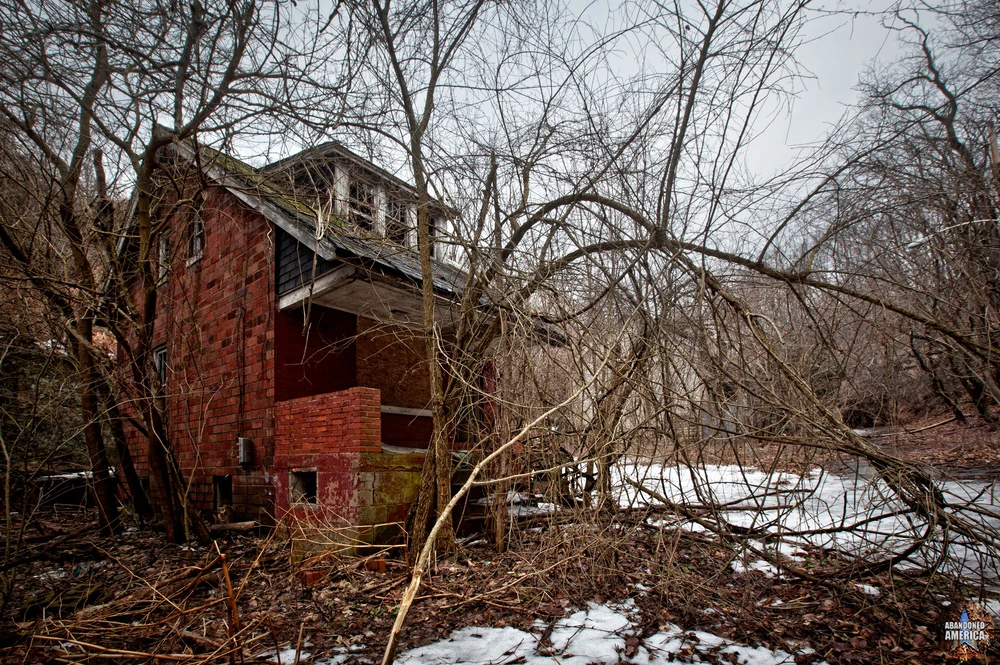Tucked hidden at the base of a hill near Clairton, Lincoln Way was a creepy little enclave that had been abandoned and was now a popular spot for vandals and urban explorers. With about thirty to forty abandoned homes, there was a lot of conjecture on the internet as to why they were abandoned. Regrettably, the most ludicrous and completely made-up myth of a “Beast of Lincoln Way” frightening the homeowners started to dominate the discussion.

Maybe the reality is more somber and ordinary. Although Lincoln Way’s history is obscure (perhaps due to the previously stated monster myths), the earliest mention of it in local media dates back to the 1910s. Lincoln Way was a “vibrant black community,” home to “a bustling enclave of large families that relied on each other,” according to this excellent and informative piece on Grounded, one of the few recent pieces that actually seems to have spoken with former residents to try to present an account based around facts. There were many businesses and a church on the street. The occupants were nourished by gardens and orchards, while a butcher shop provided meat from cattle reared behind the residences.

Lincoln Way in Claiton, Pennsylvania had a number of properties that were critically decaying and exhibited evidence of being vacant for many years.
With the exception of the deplorable habit of referring to residents of the region as “Negroes” or “Negresses” in newspaper stories published between 1920 and the 1930s, most news regarding the area is quite regular. Lincoln Way news articles include a variety of topics, including sheriff’s sales, traffic accidents, funerals, business advertisements, rental room availability, and church announcements. The arrest of two individuals at a traffic stop near Lincoln Way in 1932 for conducting “numerous bombings that have destroyed both life and property” was one notable instance (Pittsburgh Post-Gazette).

Most people associate Lincoln Way in Clairton with abandoned houses like this, but the actual history of the street is buried in folklore.
The majority of the men who resided on Lincoln Way were employed at Carnegie Illinois Steel, which was eventually renamed Clairton Works, and was located across the street from the community’s entrance. Lincoln Way was a place where coke manufacturing led to pollution on a daily basis. One of the biggest pollutants in the region, Clairton Works has been penalized several times for emissions that include caustic sulfur dioxide, which irritates the eyes, nose, and throat and has a strong match-like odor.

Each house on Lincoln Way had a unique history, but there weren’t many remaining pieces to piece them all together.
The dwellings suffered more damage in the years that followed, including an arson fire that destroyed several of them three months after I had visited in 2015. As interest in its past rose, so did the eerie tales and fables about a red-eyed monster that drove inhabitants from their homes, something that the people who really lived in the village mocked. It had become a favorite location for urbex photographers.
Lincoln Way was, in those latter days, definitely a post-apocalyptic, spooky street. Toys and mutilated stuffed animals lay strewn around the yards of the houses, grimy blinds flapped in shattered windows, and the belongings of the former inhabitants were spread throughout the dwellings as though some great tragedy had occurred there. I usually find the truth (as best I can determine it, at least) to be more fulfilling and respectful than the ghost stories that seem to invariably accompany abandoned locales. The fact of the neighborhood’s abandonment may not be as glamorous and scandalous.